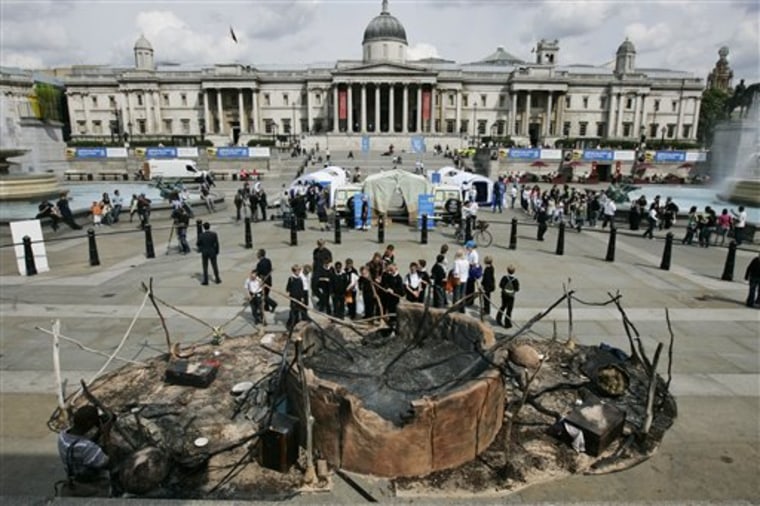Conflicts in Afghanistan and Iraq are forcing hundreds of thousands of people from their homes, driving up the global number of refugees after several years of decline, the United Nations refugee agency said Tuesday.
UNHCR said in its annual report that in 2007 11.4 million refugees were living outside their countries, compared with 9.9 million in 2006. A further 26 million were displaced within their own countries, up from 24.2 million the year before.
The group said almost half the world's refugees are from Afghanistan and Iraq. UNHCR said there are 3 million displaced Afghans, most in neighboring Pakistan and Iran, and 2 million Iraqi refugees, mostly in Syria and Jordan. A further 2.4 million Iraqis are internally displaced, an increase of 600,000 since the start of 2007.
U.N. High Commissioner for Refugees Antonio Guterres said that until 2005 there had been several years of decline as refugees returned to countries including Afghanistan, Sierra Leone, Liberia and Angola.
"Now, unfortunately, with the multiplication of conflicts and the intensification of conflicts, the number is on the rise again," he said.
Mock refugee camp
Guterres spoke amid the tents, food rations and jugs of water of a mock refugee camp set up Tuesday in London's Trafalgar Square ahead of World Refugee Day on Friday.
Guterres said bad governance, environmental degradation and rising food prices were generating instability and "new patterns of forced displacement" in many regions.
"People being forced to move, unfortunately, will be one of the characteristics of the 21st century," he said.
In Colombia, where the government has fought a decades-long war with left-wing guerillas, as many as 3 million people have left their homes, while more than 550,000 have become refugees in other countries. Around half a million Sudanese and Somalis have also sought refuge abroad, the report said.
The number of internally displaced people grew last year in Afghanistan, Sri Lanka and Yemen, as well as in the Central African Republic and Chad, where thousands of refugees have crossed the border from the Sudanese region of Darfur.
'Darfur is like an earthquake'
The U.N. estimates 200,000 people have died and 2.5 million have been displaced since ethnic African tribesmen took up arms against Sudan's Arab-dominated government five years ago. The government is accused of responding by unleashing the tribal militia known as janjaweed, which have committed the worst atrocities against Darfur's local communities.
"Darfur is like an earthquake," Guterres said. "It has an epicenter in Darfur itself, but then the waves spread and instability is created also in the countries around."
Most refugees end up taking shelter in neighboring countries. UNHCR said the top refugee-hosting countries include Pakistan, Syria, Iran, Germany and Jordan.
The group said 647,000 asylum applications were made around the world in 2007, a 5 percent increase on 2006 and the first rise in four years. The largest number were Iraqis seeking asylum in Europe. The top destinations for asylum seekers were the United States, South Africa, Sweden, France, Britain, Canada and Greece.
The report did point to progress in some areas, noting that 2.8 million refugees and displaced people returned home in 2007.
World Refugee Day
Tents, sacks of food and a replica of a burnt-out village hut appeared in Trafalgar Square on Tuesday as a tourist hotspot became a refugee camp to highlight the plight of millions of people displaced in Darfur and elsewhere.
Organizers of the mock refugee camp said they hoped it would bring the situation in Darfur home to politicians at Parliament, a few hundred yards away, as well as to Londoners and tourists visiting Trafalgar Square.
"The burning house had quite a strong impact. It was quite emotive," said 22-year-old student Charlotte Snowdon, who stopped by the exhibition. "When you see something and can experience it for yourself, it makes you understand it more."
